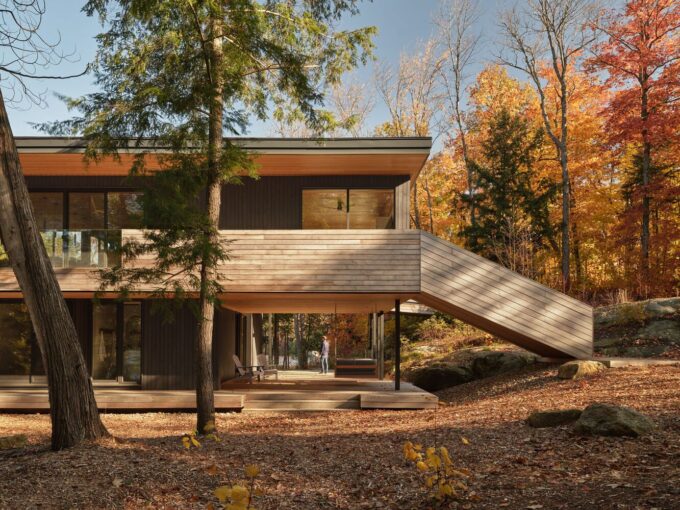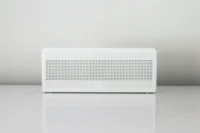- Home
- Articles
- Architectural Portfolio
- Architectral Presentation
- Inspirational Stories
- Architecture News
- Visualization
- BIM Industry
- Facade Design
- Parametric Design
- Career
- Landscape Architecture
- Construction
- Artificial Intelligence
- Sketching
- Design Softwares
- Diagrams
- Writing
- Architectural Tips
- Sustainability
- Courses
- Concept
- Technology
- History & Heritage
- Future of Architecture
- Guides & How-To
- Art & Culture
- Projects
- Interior Design
- Competitions
- Jobs
- Store
- Tools
- More
- Home
- Articles
- Architectural Portfolio
- Architectral Presentation
- Inspirational Stories
- Architecture News
- Visualization
- BIM Industry
- Facade Design
- Parametric Design
- Career
- Landscape Architecture
- Construction
- Artificial Intelligence
- Sketching
- Design Softwares
- Diagrams
- Writing
- Architectural Tips
- Sustainability
- Courses
- Concept
- Technology
- History & Heritage
- Future of Architecture
- Guides & How-To
- Art & Culture
- Projects
- Interior Design
- Competitions
- Jobs
- Store
- Tools
- More
The Evolution of Residential Security: From Locks to AI Surveillance

Security used to be a bolt on the door. Now it’s an intelligent system that can react faster than a human. In this article, I unpack how we got from deadbolts to AI guardians watching over our homes. It’s not just about tech—it’s about how architecture adapts to it. I’ll show where design fits into this shift and why ignoring it makes your buildings obsolete before they’re even built.
We’ve stepped into an era where your home doesn’t just shelter you—it thinks with you. This transformation didn’t happen in a vacuum. It’s the result of a fascinating collision between digital intelligence and spatial design—a new kind of synergy where walls and wires whisper to each other, working in concert to create spaces that are not only secure but intuitively alive. How smart homes are shaping the future of architecture is at the heart of this evolution.
Table of Contents
ToggleFrom Iron Bars to Intelligent Eyes
The earliest attempts at residential security were simple: fortify the space. We had metal locks, thick doors, and barred windows. These measures were static, relying solely on physical strength to keep intruders out. And for a time, they worked. But they were reactive at best. Once breached, you were on your own.
Then came alarms—loud, sometimes false, always after the fact. They alerted, but they didn’t intervene. Their role was limited, like a smoke detector after the fire’s begun. Security was still something we added on, not something we integrated.
Now, that model has flipped. Today’s systems aren’t just loud; they’re watching, learning, and responding. They don’t wait for a breach—they anticipate it. And that shift didn’t just need better tech; it needed better design thinking. We needed to evolve not just the gear, but the mindset.
Homeowners began to realize that walls weren’t enough. Even gated communities learned the hard way that criminals could exploit blind spots. That ushered in the age of cameras—first analog, then IP-connected, and finally AI-driven. And with each leap, the definition of safety grew more sophisticated.
The Rise of Surveillance as a Design Driver
It used to be that architects prioritized beauty, light, and structure. Now, they must consider sightlines, sensor ranges, and camera concealment. AI surveillance has made security an architectural concern, not just an engineering one.
Designing with surveillance in mind means planning for overlapping fields of view, minimizing visual obstructions, and enabling data infrastructure to coexist with aesthetics. Architects can no longer afford to think of security as an afterthought.
When Form Serves Function
Take multi-family housing complexes. Aesthetically, designers want clean lines and privacy. But AI surveillance systems need visibility—unobstructed angles, access to entry points, and line-of-sight across common areas. The balance is delicate, but not impossible.
Scene-setting examples abound: an apartment lobby with elegant, recessed cameras that blend into the molding. A rooftop garden monitored by drones that retreat into charging stations disguised as light fixtures. Here, form doesn’t just serve function—it collaborates with it.
Designing for Data Infrastructure
Modern AI surveillance systems rely heavily on bandwidth and real-time data processing. That requires smart routing of cables, dedicated server closets, and even planning for thermal management where processors run hot. Good design doesn’t just hide the tech—it empowers it. Sustainable architectural solutions ensure that this integration doesn’t just work but also remains environmentally friendly.
Many architects are now coordinating with IT consultants and low-voltage engineers as early as the schematic phase. This collaboration ensures that the vision for seamless living aligns with the realities of system integration.
What Makes a Surveillance System “Smart”
Modern systems do more than record footage. They identify threats, assess behavior patterns, and speak directly to intruders in real time. This leap from passive recording to proactive deterrence is what sets AI security apart. How anti-intrusion security systems enhance home safety will be a key part of this discussion, as the integration of real-time monitoring and AI-driven responses shapes the future of home security.
But intelligence requires architecture. These systems must be embedded into the layout, not tacked on. Power supplies, connectivity nodes, and processing hubs all have spatial requirements. If the layout doesn’t accommodate them, the system underperforms—or worse, fails entirely.
This is where the conversation gets serious. A residential remote surveillance system isn’t just a gadget; it’s infrastructure. And like plumbing or HVAC, it needs to be planned at the blueprint stage.
Human-in-the-Loop Systems
Even the smartest AI can’t always tell intent. That’s where human agents come in. The most reliable systems combine AI recognition with trained professionals who verify threats in real time. This hybrid model drastically reduces false alarms and ensures interventions are warranted.
That, too, needs planning. Live monitoring centers need seamless, encrypted data transmission. Homes and buildings need the digital plumbing to handle those flows securely and reliably.

Obsolescence by Design: When Homes Can’t Keep Up
One of the most overlooked issues in new construction is security compatibility. Builders may check boxes for insulation and energy efficiency but miss entirely on tech-readiness. The result? Homes that age faster than they should.
A house built without cabling pathways for high-res feeds or without shelf space for local AI hubs may find itself unable to integrate newer security systems. Retrofitting becomes costly, invasive, and often inadequate.
We see this in developments where camera placement is an eyesore, or where signal strength drops in critical areas due to poor router placement. These aren’t tech problems—they’re architectural oversights. The irony? They’re avoidable.
Tech-Readiness as a Selling Point
Future buyers will expect more than granite countertops. They’ll want homes that are “smart-ready”—wired not just for entertainment systems but for perimeter monitoring, facial recognition modules, and smart intercoms. Builders who bake this in from the start are already gaining competitive edge.
This isn’t about installing flashy features. It’s about laying the groundwork. Homes that are tech-ready attract tech-savvy owners—and that’s increasingly the mainstream market.
Designing for Peace of Mind
Ultimately, security isn’t about paranoia; it’s about presence. A well-integrated system fades into the background. It doesn’t dominate the space—it watches over it, quietly.
Think of a home where AI knows the difference between a delivery and a disturbance. Where the lights don’t just turn on, but track movement to reassure you of safety. Where alerts go to the right person at the right time, not just to a noisy app log.
This is the new frontier of residential design. It’s not just about materials or layouts—it’s about experience. And that experience includes being safe, seen, and serene.
Emotional Architecture
Peace of mind isn’t just technical—it’s emotional. Knowing your home sees what you miss creates a sense of psychological safety. Families sleep better. Elderly residents feel more secure. Parents can focus on their kids instead of what’s outside the window.
Designing for security means designing for calm. That’s a powerful differentiator in a high-stress world.
The Future Is Already Wired
AI surveillance is no longer a luxury add-on. It’s becoming the standard. For architects and developers, the message is clear: design with it, or be designed around.
We’re approaching a point where the market will reward future-ready spaces. Renters and buyers are starting to ask about security tech alongside countertops and flooring. And when buildings fall short, they lose out.
This shift puts responsibility back on design professionals. It’s not enough to build beautiful spaces. We need smart ones too—spaces that anticipate needs, adapt to threats, and quietly watch our backs.
Regulation Is Coming
As adoption grows, we can expect building codes and permitting standards to evolve. Cities may begin requiring certain levels of embedded surveillance in multi-family buildings. Insurance companies are already incentivizing properties with proactive security systems.
The design decisions we make today could determine compliance—or obsolescence—tomorrow.
Conclusion
AI surveillance is no longer a luxury add-on. It’s becoming the standard. For architects and developers, the message is clear: design with it, or be designed around. This shift puts responsibility back on design professionals. The future of smart homes is here, and it’s changing the way we think about home security, with more comprehensive and intelligent systems.
That’s the challenge for modern architecture: to think ahead, to wire for possibility, and to build not just for comfort, but for calm. Because a home that’s prepared for anything is the kind of home that lets you relax, even when the world outside gets unpredictable.
illustrarch is your daily dose of architecture. Leading community designed for all lovers of illustration and #drawing.
Submit your architectural projects
Follow these steps for submission your project. Submission FormLatest Posts
The Ultimate Guide to Fencing in North Dakota: Choosing the Best Fence for Your Property
Watching a chain link fence twist in 70 mph winds near Minot...
Gaudí: Where Architecture Meets Science
Gaudí: Where Architecture Meets Science shows catenary arches, ruled surfaces, and biomimicry...
How Housing Market Forces Shape Architectural Design Today
Architecture never exists in isolation. Buildings rise from a mix of ambition,...
Why Portable Formaldehyde Gas Detectors Matter on Construction Sites
As construction practices shift toward more enclosed and material-intensive environments, the risk...












Leave a comment